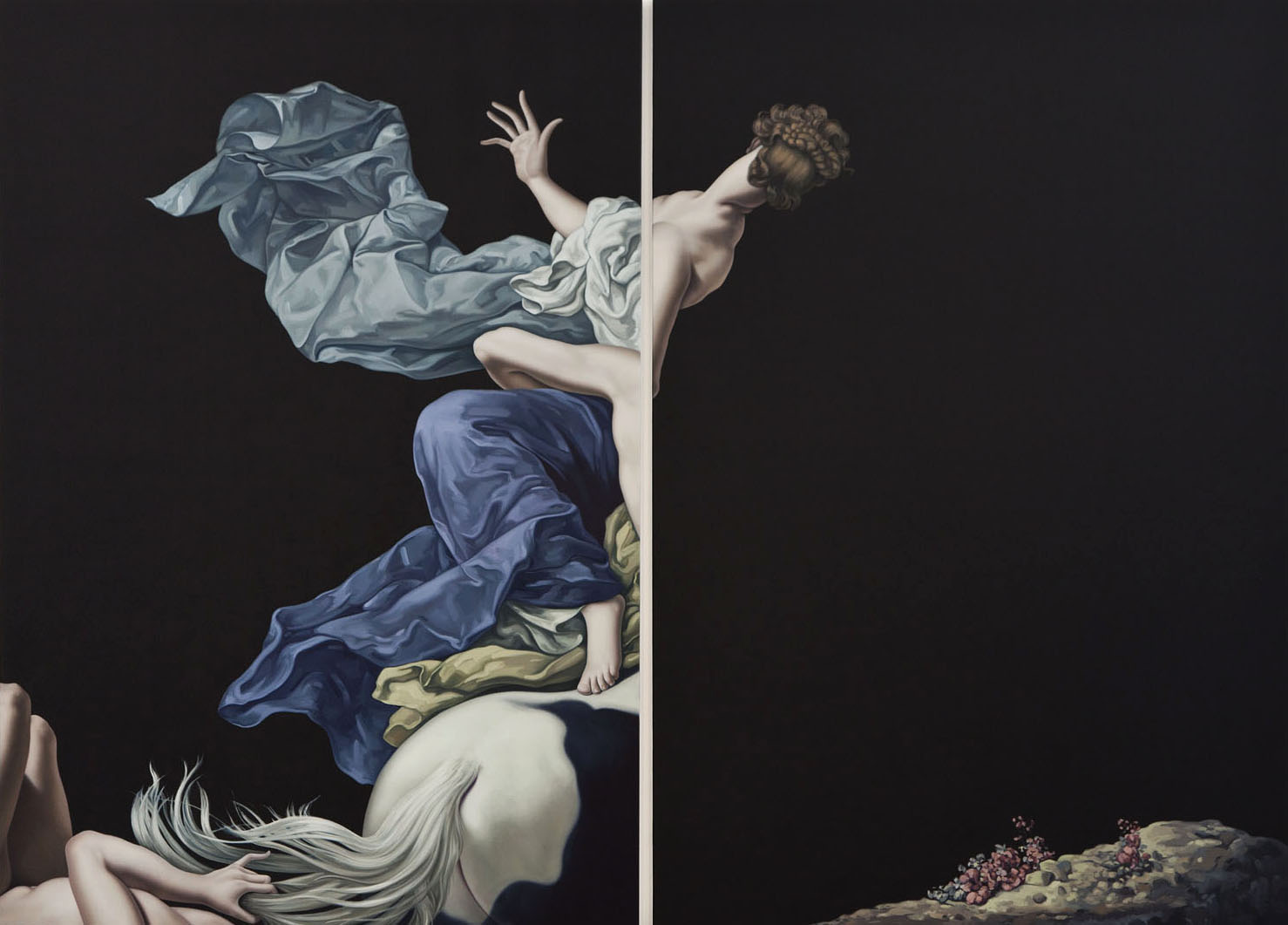ENGENDER: The Subjectivity of Male and Female
By Joel Martens
The construct of what makes us male and female is perhaps one of the most obdurate that we as a society face. More often than not, in our need to make comfortable our understanding of things not simply defined, we seek to classify in extremes, simplifying what should be a delightful spectrum into simplistic, unthreatening terms of black and white.
Human sexuality is one of those multi-layered continuums not easily defined, and one we try, often imprudently, to simplify into comfortable, easily understood primary tones.
Breaking down that rigidity is a part of what the exhibit Engender, at Los Angeles’ Kohn Gallery hopes to do.
As Curator Josh Friedman put it, “Gender is a deeply important topic, and one that has not been given nearly enough exposure. I wanted to create a show that could provide awareness into what gender means today. When you have something so tethered to a long history of cultural categorizations, so many assumptions occur that negate proper exposure, discussion and education on a very complex and multilayered component of all our lives. I wanted to provide a platform highlighting artists who are reclaiming that narrative, visually crafting languages that speak to their own unique experience and yet can very much be understood by all.”
It is no accident that the primary mode of expression is grounded in the multihued medium of paint, very much a conscious choice by Freeman. “Painting has such rich and deep lineage when it comes to the depiction of gender, so I loved the notion of specifically focusing the show on contemporary artists, who use that historical medium as a means to break away and challenge these traditional binaries. They’re looking to the past to reshape the future.”
During his research for Engender, it became clear to Freeman that the topic couldn’t be discussed properly, without showing many different voices and approaches. “Gender is not something that can be classified into one or two categories, but exists in many layers of our lives. It interacts and means different things for every single person. My hope with this show is to really capture that dimensionality,” he stated.
“From a variety of different cultures, ethnicities and backgrounds, each artist was selected for their unique skills and strength in speaking to this topic. Each internalizing a number of societal projections, while asserting their own individual presence and significance.”
Freeman goes on to discuss his selection process and why he felt each chosen artist was significant. “A number of artists in the exhibition—including Mequitta Ahuja, Zoë Charlton, Firelei Báez, Christina Quarles, Tschabalala Self—deconstruct black female subjectivity by reassembling disparate iconographic materials and motifs into fragmented portraits. Others such as Hernan Bas, Jonathan Lyndon Chase and Jesse Mockrin, explore self-discovery through images of androgynous young boys rendered in shifting historical and contemporary styles.”
One of the artists represented, Jonathan Lyndon Chase, talked about his unique perspective on the subject and why he contributed to the show. “Black and queer narratives are more than pain: Black joy, queer joy, is an act of protest. Black love, queer love is an act of protest. Fat bodies and femme bodies are as valid as other bodies and queer black bodies are complex and are not all the same.”
Extrapolating his perspective even further, he went on to say, “I charge my work with emotion and memory. Sensitivity to touch, line weight and the weight of color are some things I think about in how paintings and drawings are made. My work started off with exploring myself and others who were close to me and it still functions that way, as I think about gender in relationship to sexuality and race. I think about intersectionality a lot and how the body acts as a landscape for a gender non-binary body…who is also black. I think about how both identities/bodies are politicized through different gazes and spaces we go through. I like to merge highs and lows together and blend and blur the lines. Destroying the ‘straight line’ so to speak.”
Artist Christina Quarles articulated her reasons for participating and how she approaches her work in general. “As a Queer, cisgender, mixed race woman, I engage with the world from a position that is multiply situated. My specific set of circumstances has forced me to confront identity ambiguity from an early age, but I think all of us have experienced a complexity of self that cannot possibly be contained by simplified identity positions. Even someone whose identity comes with the privilege of going unquestioned and whose power, in fact, relies on being unexamined—say the straight, white, able-bodied, American-born, middle class, Christian cisgender male—I would guess that even he experiences a sense of self that exceeds the confines of these categories.”
Quarles astutely concluded by saying, “One of the potentials of art is that it allows people to position themselves within a space they may not feel is theirs to explore. My hope is that these paintings can be refuge for those of us who experience ambiguity on a daily basis and to unlock ambiguity within those who have never had cause to question their own identity position.”
Freeman summed up the exhibit and the experience of pulling Engender together. “It was fascinating to see the various ways gender effects and influences each of these artist’s lives. The commonality between them all is their adversity to traditional binaries constructed by society. Gender is not something that can be classified into one of two things, but is incredibly complex and layered. Every single person has their own unique relationship with gender and how it defines their identity. It is really incredible seeing the way that contemporary artists are uncovering new visual languages and inclusive forms of expression surrounding these topics.”

